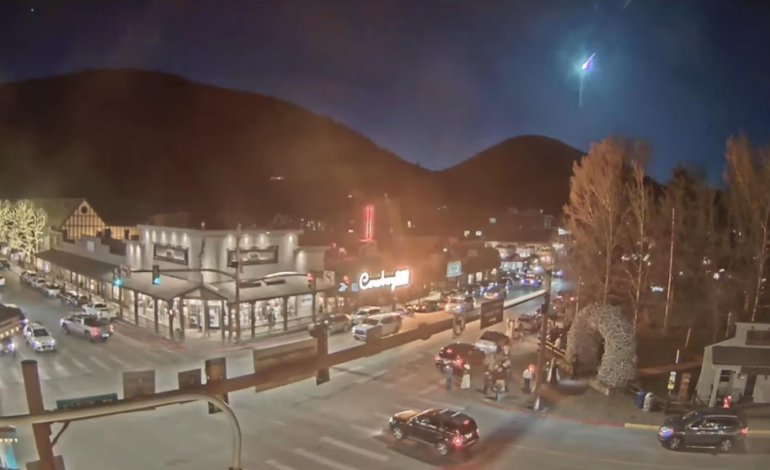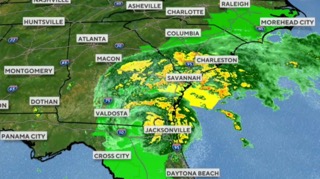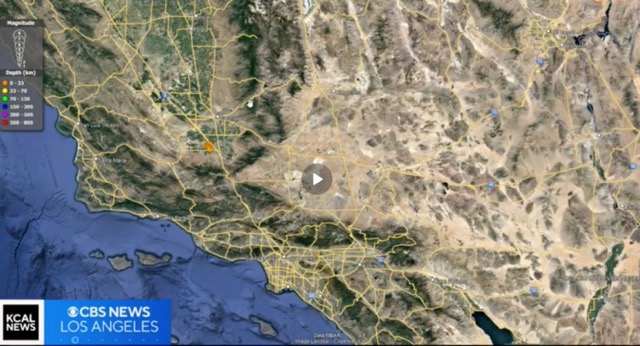A rare and dazzling meteor streaked across the skies of Wyoming and several neighboring states Saturday night, captivating viewers with a brilliant display of green, purple, and other vibrant colors, Cowboy State Daily reports.
Described by experts as a “once-in-a-decade” fireball, the phenomenon was visible from as far north as Alberta, Canada, to as far south as Colorado and west to Oregon’s Pacific coast.
The American Meteor Society (AMS) received hundreds of witness reports, ultimately identifying the fireball’s atmospheric entry point near Yellowstone National Park around 9:20 p.m. According to Max Gilbraith, planetarium coordinator at the University of Wyoming, the meteor likely disintegrated as it traveled eastward, with fragments possibly falling near US Route 20 in Idaho.
“This one was really, really special,” Gilbraith said, noting the intensity and vivid range of colors reported.
A video recorded from Jackson, Wyoming, even showed the fireball casting a glowing purple trail above the city’s iconic Cowboy Bar.
Fireballs are meteors brighter than magnitude -4, similar in brightness to Venus or a full moon. While such events occur globally every day, most go unnoticed due to daylight or remote locations. The exceptional visibility of Saturday’s meteor was part of what made it stand out.
The meteor’s color spectrum suggests a complex chemical composition. Retired Wyoming State Climatologist Jan Curtis explained that various elements burn at different temperatures and emit different colors. The prominent green hues likely resulted from magnesium and iron, while traces of blue, red, and purple could indicate the presence of nickel, manganese, or copper.
“As it burns up, those minerals create colors, much like what’s used in fireworks,” Gilbraith said.
In addition to the visual spectacle, some observers reported hearing a delayed explosion or boom—evidence of a sonic event caused by the meteor’s rapid disintegration. While not on the scale of the 2013 Chelyabinsk meteor, which caused widespread damage in Russia, this Yellowstone fireball still made a powerful impression.
“There’s no indication of injuries or property damage,” Gilbraith noted. “But meteors of this size and brilliance don’t happen every year, especially not in places like Wyoming.”
The contrail—or lingering smoke trail—left behind by the meteor may have persisted for hours, depending on wind and atmospheric conditions. Such trails are composed of fine particles and can create twisting, luminous patterns long after the meteor itself is gone.
The proliferation of security and dashboard cameras has increased both the visibility and documentation of such events. The AMS received video footage from locations ranging from Deaver, Wyoming, to Salt Lake City, Utah. These recordings provide scientists with valuable data for understanding the trajectory and composition of meteors.
With no physical fragments recovered yet, experts say it would be difficult to locate any remnants without specialized equipment.









The latest news in your social feeds
Subscribe to our social media platforms to stay tuned